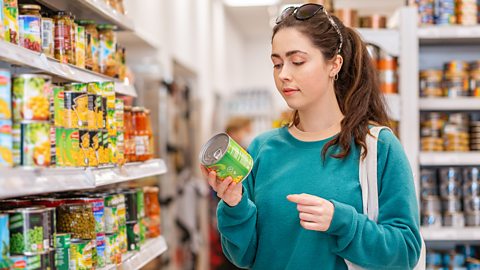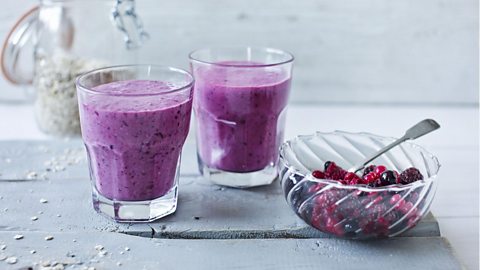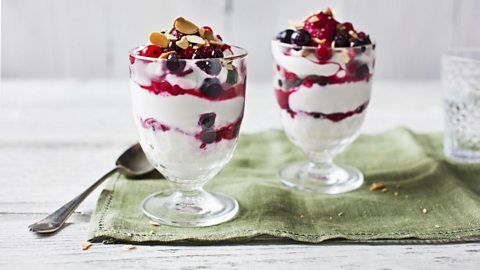What are the healthiest budget foods you can buy?
If the cost-of-living crisis is impacting your ability to buy ‘healthy’ food, these cheap ingredients are full of nutrients.

Food costs are soaring and people are struggling to afford nutritious food. The Food Foundation’s 2022 Broken Plate report, explains ‘more healthy foods are nearly three times as expensive per calorie as less healthy foods.’
Dietician Tai Ibitoye is seeing first-hand how people are impacted. “A lot of my clients are saying healthy eating is very expensive at the moment… a lot of things are pricier.”
However, Tai has top tips to make sure your shopping basket continues to contain the nutrients you need. “You can still eat well without feeling like you're breaking the bank. It is possible,” she says.
What makes an ingredient ‘nutrient-dense'?
Put simply they will be rich in vitamins and minerals and promote good health. At the other end of the scale, an unhealthy ultra-processed meal could contain lots of salt, fat and sugar and be stripped of nutrients so associated with poor health outcomes.
The NHS and EatWell guide explain that in addition to drinking plenty of fluids our diets should include starchy carbohydrate foods, a variety of fruit and veg, dairy or dairy alternatives, protein and a very small amount of oils and spreads.
By eating a varied diet which includes these food groups, you should receive all the vitamins and minerals required. Here’s how you can buy key ingredients that are packed full of nutrients even if you’re on a tight budget.
Better for you carbs
Opt for wholegrain versions which are high in fibre, something we aren’t getting enough of. “It’s recommended we should have 30g of fibre a day. However, most of us aren't meeting that recommendation,” says Tai.
“They contain calcium iron, B vitamins and fibre,” explains Tai before she adds that it’s not just pasta, bread, bran or rice that contain wholegrains. “You might be able to find offers on couscous or bulgur wheat.”
While supermarkets don’t always stock wholegrain varieties in their budget range, the 500g supermarket bags of own-brand pasta tend to cost the same regardless of whether you’re buying wholegrain or white.
Meanwhile, porridge oats – which are all wholegrain are frequently available in budget brands and when used for breakfast can be heated in the microwave to reduce spending extra on energy or turned into overnight oats with no cooking required. You could also use oats to bulk out other meals – such as vegan meatballs.
If you’re sticking to white rice and pasta, think about whether you really do need a specific variety or shape. For example, long grain rice is frequently cheaper than basmati.
Another great budget option? The humble potato – the skin’s packed with fibre and on top of that comes with vitamin C, Vitamin B6, potassium, folate, and iron. If you buy in bulk, they work out cheaper, and you could cook up a whole bag and freeze (then reheat in the microwave) to save on energy costs. Make it sweet potatoes and they’ll count as both one of your five a day, as well as being a high-fibre carb.
Affordable fruit and veg
We’re encouraged to ‘eat the rainbow’ but this doesn’t mean you need to go for expensive options. Tai points out that despite buzzwords such as ‘superfood’ which is placed before some types of fruit and veg, they're all full of nutrients.
For cheaper veg opt for root vegetables such as onions, carrots, cabbages and celery. Also, don’t be put off by fruit and veg labelled wonky says Tai. “They aren't seen as appealing however, they still contain the same whole nutrients as regular fresh fruits or vegetables.”
Frozen and tinned varieties are even cheaper and still packed with nutrients. Tinned tomatoes – a base for everything from spaghetti bolognese to cottage pie, count towards your five a day and most supermarkets carry them in their budget range.
Frozen mixes whether that’s veg or fruit (the latter is often labelled as ‘smoothie mix’) will help you reach your five-a-day quickly and will be far cheaper than if you bought the items fresh and individually.
Blackberry and apple crumble smoothie
You could make this using frozen fruit and wholegrain oats

Once purchased, stretch your veg by using them in dishes such as soup. Got a few potatoes that are starting to look worse for wear? Combine them with a tin of sweetcorn and make a nourishing chowder.
Cheap and healthy dairy
Dairy has increased dramatically in price, however there are bargains to be had. Look beyond labels, instead of feta go for salad cheese, rather than cream cheese pick up soft cheese. They’ll contain similar levels of calcium and protein as their more expensive counterparts.
Want to get the most nutrients for your money? The British Heart Foundation recommend reduced-fat hard cheese and reduced-fat cottage cheese
Avoid individual portions where possible – for example sliced cheese and small yoghurt pots as these will cost more per gram than larger blocks/pots.
Natural low-fat or Greek-style (which tends to be higher protein) come with the most health benefits, while those which are packed with sugar are unsurprisingly, not recommended.
If buying dairy alternatives – such as oat or soya milk, check the long-life section. They are frequently cheaper than their chilled counterparts.
Berry yogurt with frozen berries
This looks fancy but uses budget-friendly ingredients and you could cut costs further by excluding the flaked almonds

Protein powerhouses
Tinned oily fish – such as mackerel and sardines, and tinned pulses are great budget options says Tai. And, they come with additional benefits to protein.
“In autumn and winter people need to be more mindful of vitamin D, because the main source for it is sunlight. However, we also get vitamin D from our diet, but the foods that contain it is quite limited. Oily fish including sardines, mackerel and salmon contain it, and fish fingers have it added too – including budget-friendly supermarket own brand ones.
“Oily fish also contains omega-three fatty acids which play a role in protecting our heart and also reducing our bad cholesterol levels too,” says Tai.
As for tinned pulses. “Kidney beans, baked beans, black eyed beans and tinned lentils are full of nutrients – they come with protein, iron and fibre” says the expert. Plus, they’re great for padding out meals and for batch cooking (which, if you have freezer/fridge space will help you save more). You could buy dried beans and lentils which are even cheaper and options such as red split lentils don’t require a long soak, just a thorough rinse.
The nutrient-dense budget shopping list
✓ Supermarket-own brand wholegrain pasta
✓ Budget range potatoes
✓ Budget range porridge
✓ Root ‘wonky’ veg
✓ Own-brand Frozen/tinned mixed fruit and veg
✓Budget range tinned tomatoes
✓ Supermarket tinned pulses/red split lentils
✓ Budget range soft cheese/salad cheese
✓Own-brand natural/Greek yoghurt
✓ Tinned fish
If you, or someone you know, have been affected by hardship, debt or homelessness, there are organisations who may be able to help with advice on accessing benefits and services.
Originally published November 2022